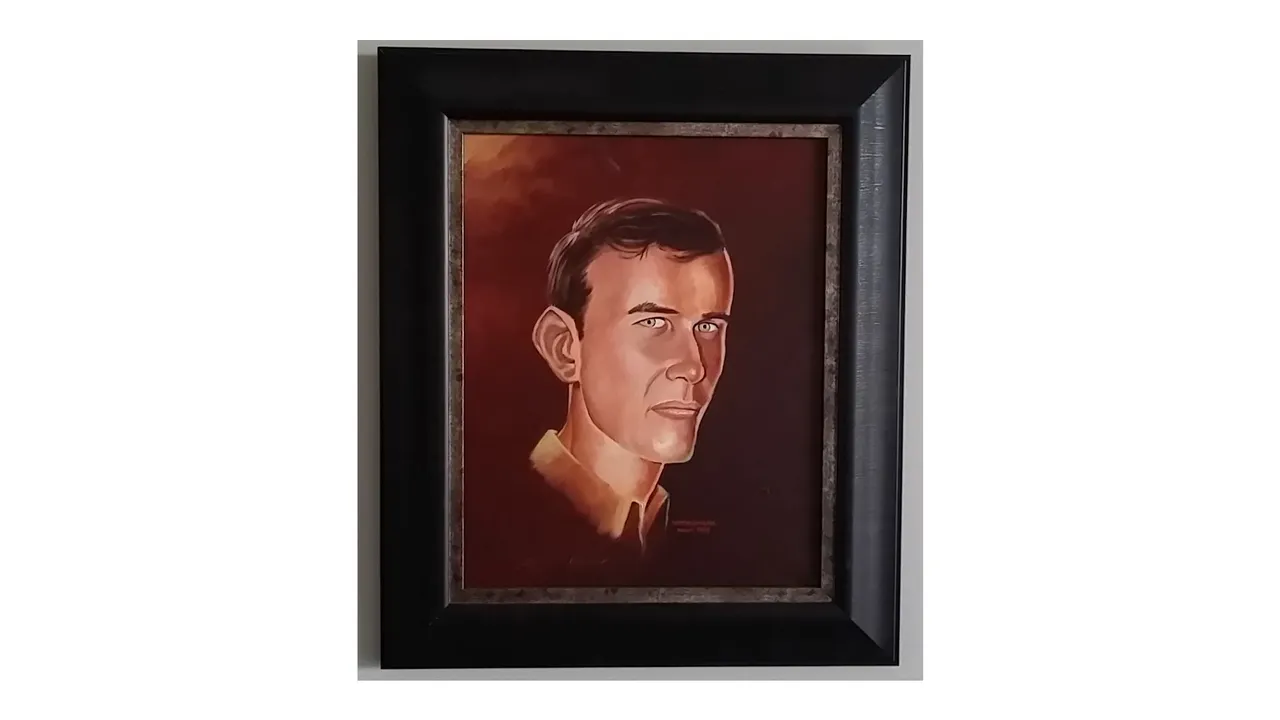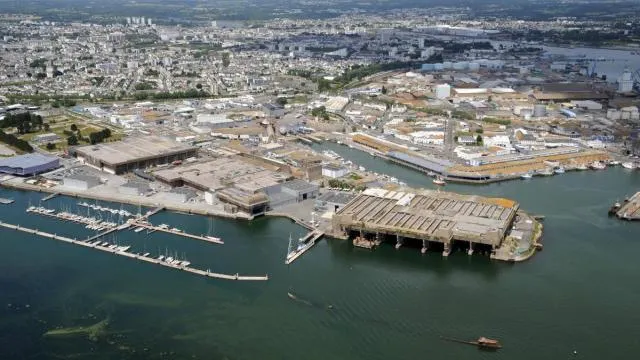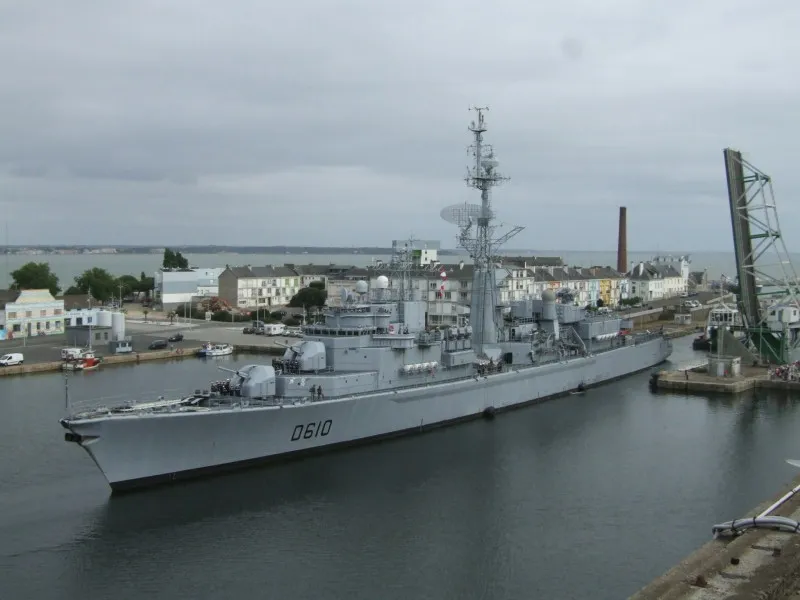This is the story of my life so far: 67 years and counting.
Prequel: A Brief History of my Family in France

The story starts here
Previous episode: Part 43
Lorient, Brittany
in 1972-1974, when I was posted on the Frigate Tourville, Lorient was both a naval arsenal and a submarine base.

Lorient Harbor with the Keroman Submarine Base
source
These days, military ships are still built in Lorient, but since 1997 the Keroman Submarine Base is no longer in operation. The base had been built by the Germans during World War II and was so strongly built that neither the Allied nor the Germans were not able to destroy it in 1945.
In Lorient, the first year, I was renting a furnished apartment where I was living alone.
Trials at sea on the Frigate Tourville
The Frigate Tourville was the first of the F67 type. Two other F67 frigates, the Duguay-Trouin and the de Grasse were also built in Lorient.
The Frigate Tourville was specialized in anti-submarine warfare.
She had two shaft steam turbine machinery and a double hangar for two Lynx WG13 helicopters.
Both the Tourville and the de Grasse have been decommissioned in 2011 and 2013.

Frigate Tourville
source
When the ship was considered seaworthy, we started the trials at sea.
It started with the propulsion and navigation tests. Then, the equipment and weapon tests followed.
There are some tests that are only done during the initial trials at sea because they are expensive.
One example of such tests is a long duration at "PMP" (Puissance Maximum Possible) that is using the steam engine at maximum power for at least an hour.
The speed of the Tourville, at PMP, was 32 knots (59 km/h or almost 37 mph). Going at such speed on a ship of 6,000 tons is exhilarating.
An even more fun test is an emergency stop. For every French ship, the specifications are that it must go from maximum speed (at PMP) to a complete stop in less than three times its length. For the Tourville, with a length of 152 m, it meant to go from 32 knots to zero in around 450 m.
With a GPS, it is now easy to measure the distance from the point when the order for an emergency stop is given to the point when the ship is effectively stopped. But there was no GPS in 1973 and no other precise system to measure position.
So the procedure involved a man at the stern, a man at the bow, both connected by phone to the bridge.
When the emergency stop order is given, the man at the stern would throw a small buoy in the sea. When the man at the bow sees the buoy passing him, it signals it and another buoy is thrown by the man at the stern. The test succeeds if the man at the bow does not see 3 buoys passing him.
When we did this test, successful the first time, after the ship stopped, because it is not possible to decrease very quickly the production of steam, approximately one ton of steam was released in the atmosphere through the safety valve on the top of the mast, with a very loud noise. That was spectacular.
Some of the weapon tests needed to be done when the ship was rolling. This was easy to do on the Tourville because it was equipped with four stabilization fins. Those could be used to create an artificial roll of up to 45 degrees.
Being Bored
My personal life, outside of work, was rather dull. I had no real friend in Lorient. And I was too shy to try to meet girls.
So, I decided to do something bold during my vacations in the summer of 1974: I would go to Cameroon in Africa and visit my friend Michel Djeng Bitjong, a Cameroonian Navy officer that was in my post at the École Navale.
If you have read the Summary, you should be able to guess what happened there.
Continue to Part 45
If you like this story, please consider following me @vcelier
Summary
Part 1 - Part 2 - Part 3 - Part 4 - Part 5 - Part 6 - Part 7
Part 8 - Part 9 - Part 10 Part 11 - Part 12 - Part 13 - Part 14
Part 15 - Part 16 - Part 17 - Part 18 - Part 19 - Part 20 - Part 21
Part 22 - Part 23 - Part 24 - Part 25 - Part 26 - Part 27 - Part 28
Part 29 - Part 30 - Part 31 - Part 32 - Part 33 - Part 34 - Part 35
Part 36 - Part 37 - Part 38 - Part 39 - Part 40 - Part 41 - Part 42
Part 43
